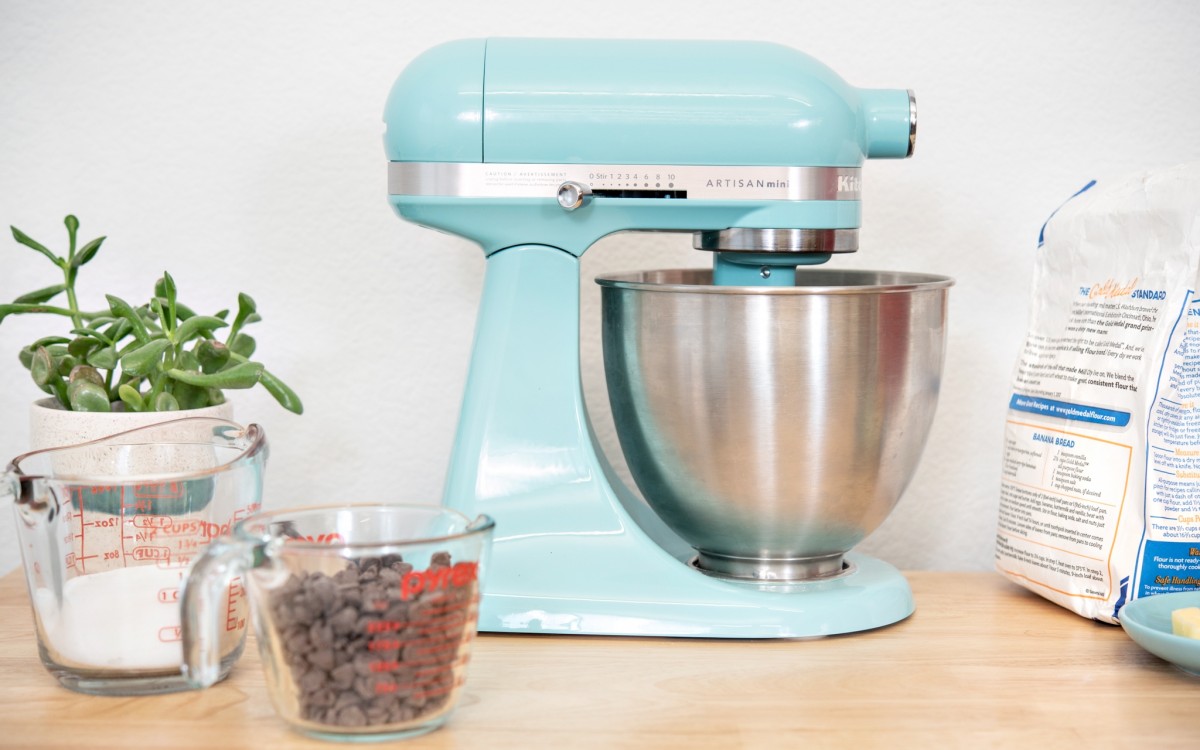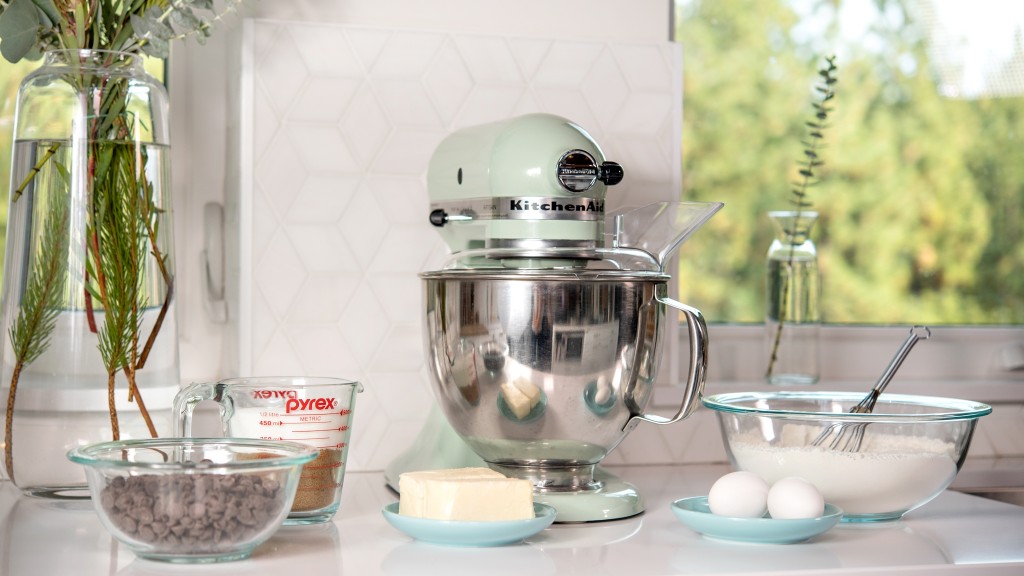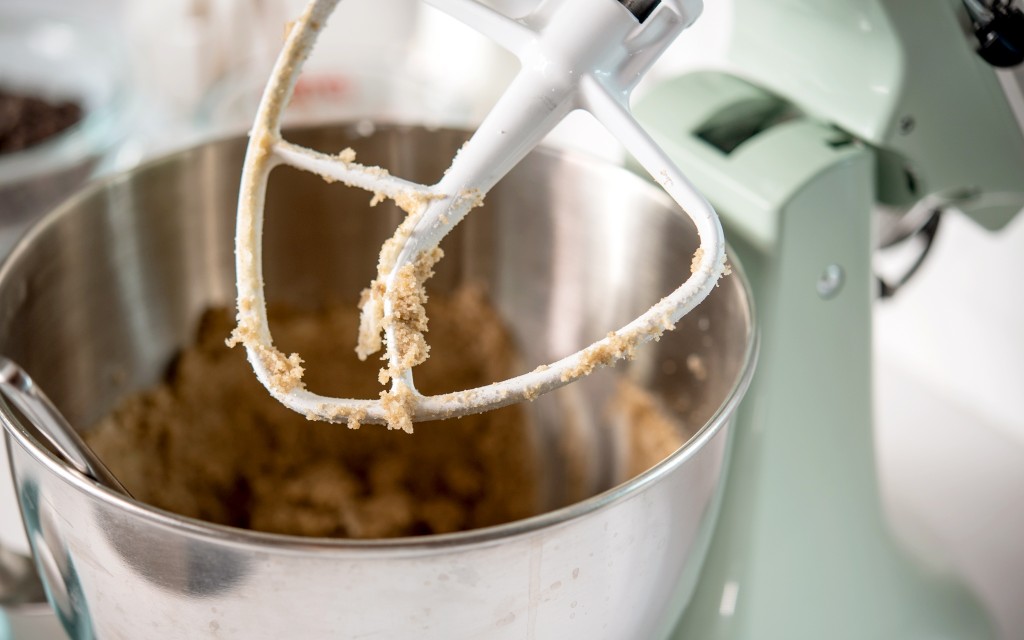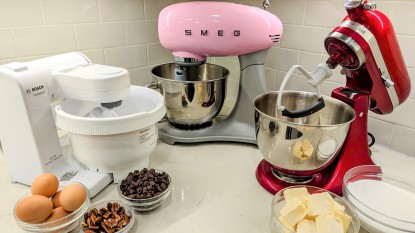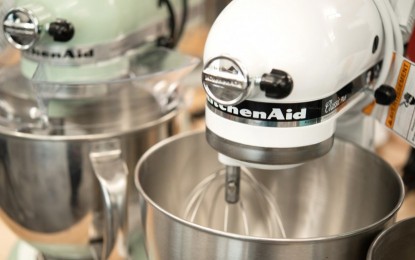Our Verdict
Compare to Similar Products
 This Product KitchenAid Artisan Stand Mixer | |||||
|---|---|---|---|---|---|
| Awards | Best Overall Stand Mixer | Best Mini Stand Mixer | Best Mixer on a Tight Budget | ||
| Price | $450 List $429.95 at Amazon | $380 List $379.95 at Amazon | $170 List $169.99 at Amazon | $120 List $130.55 at Amazon | $80 List $39.99 at Amazon |
Overall Score  |
|||||
| Star Rating | |||||
| Bottom Line | A versatile stand mixer that will exceed most cook's requirements at a manageable price | This standing mixer is a miniature of the classic KitchenAid tilt-head design though the decrease in size should not suggest a decrease in craftsmanship, performance, or cost | This economic mixer sacrifices little in the way of performance to keep the cost low | This is a light-duty machine for those that use mixers infrequently | Essentially this is a hand mixer mounted into a stand |
| Rating Categories | KitchenAid Artisan | KitchenAid Artisan... | Aucma 6.5qt | Hamilton Beach 7-Speed | Dash Everyday Stand... |
| Ease of Use (30%) | |||||
| Mixing (30%) | |||||
| Whipping (25%) | |||||
| Kneading (15%) | |||||
| Specifications | KitchenAid Artisan | KitchenAid Artisan... | Aucma 6.5qt | Hamilton Beach 7-Speed | Dash Everyday Stand... |
| Head Type | Tilt | Tilt | Tilt | Tilt | Tilt |
| Bowl Capacity | 5.5 quart | 3.5 quart | 6 quart | 3 quart | 6.5 quart |
| Standard Attachments | Whisk, dough hook, and flat mixing paddle | Wire whip, flat beater, spiral dough hook | Wire whip, flat beater, spiral dough hook | Beaters and dough hooks | Wire whip, flat beater, spiral dough hook |
| Motor Power | 500-watt | 250-watt | 575-watt | 250-watt | 660-watt |
| Mixing Action | Planetary | Planetary | Planetary | Kneading and triplicate whip | Planetary |
| Number of Speeds | 6 | 10 | 10 | 6 | 7 |
| Attachment Port? | Yes | Yes | Yes | No | No |
| Timer? | No | No | No | No | No |
| Measured Dimensions (L x W x H) | 14.25" x 8.75" x 14" | 14.5" x 10.75" x 14.25" | 14.5" x 11.25" x 16" | 10.5" x 7.5 x 10.25" | 15.2" x 9.4" x 12.4" |
| Measured Weight | 18lbs. 2oz. | 16lbs. | 26lbs. 1oz. | 4lbs. 1oz. | 13lbs. 6oz. |
| Warranty | Limited 3-year | Limited 5-year | 1-year | Limited 1-year | None |
| Color Options | 8 | 10 | 22 | 9 | 7 |
Our Analysis and Test Results
Given its capability and ease of use, it is no wonder that the 5-quart KitchenAid Artisan is such a popular kitchen appliance among home cooks and bakers. There are a few tasks that this machine can't tackle with proficiency. Its standard attachments and planetary mixing action will knead and mix to a high standard, while the sleek design is easy to clean. Moreover, you can purchase dozens of aftermarket attachments to meet any culinary desire. With over 40 colors and numerous aftermarket bowl options, this machine has style, too. Our tests revealed little to criticize, leading us to believe that this mixer will appeal to everyone from the casual baker to the creative home cook with many mouths to fill.
Ease of Use
Putting aside improved cooking and baking outcomes using a stand mixer to reduce kitchen workload is paramount. One might even go so far as to ask: what's the point of having better frosting if the stand mixer is a pain in the rear to use? To avoid the feelings of frustration and disappointment that accompany using a poorly designed product, we make a detailed inspection and analysis of the features contributing to ease of use. These include the user interface, the machine's sturdiness, craftsmanship, cleaning, and the overall user experience. Given the breadth of this analysis and its impact on the user's satisfaction with the stand mixer, we weight this metric to account for 30% of the final score.
The Artisan has a simplistic design, and as a result, its operation proves to be straightforward. It has a tilt-head configuration, which means that there is a hinge that allows the head to rock back and forth to remove both the mixing attachment and the bowl. A tilt-release switch is conveniently positioned on the side of the motor, and the mixing bowl has an outward-facing handle. These design features make the one-handed operation of the machine an easy task. Additionally, the mixing speed is controlled by a lever opposite the tilt-release.
The KitchenAid Artisan has a wide range of speed settings. The RPMs this machine can produce would have inferior products taking a walk across the countertop. Not so with this machine. KitchenAid's designs are well balanced and don't so much as shimmy, let alone walk around. The tolerances of the mixer's componentry limits squeaks, scrapes, and rattles. Moreover, the gap between the mixing attachment and the bowl is precise, resulting in less unmixed ingredients and minimal contact between the two.
Given the high speeds and sturdy platform of the Artisan, we found the automatic slow start-up function to be quite useful. No matter what speed the mixer is set to, it will start at a low speed before slowly ramping up. This delay gives the user time to adjust the speed setting before the bowl contents are thrown across the kitchen. The mixer also has a splash guard, but we found it to be ill-fitting. However, it is better than nothing for high-speed mixing wet ingredients.
Lastly is clean-up. A wise woman once said that you don't have to clean up what you don't spill. As discussed, this product has several features that limit spills and splashes. However, the tilt-head will gather some ingredients that missed their mark. We found that the machine is easy to wipe down, with minimal inside corners and grooves to complicate matters.
Mixing
Mixing, which accounts for 30% of the mixer's overall score, is the principal function that these machines will fulfill. We have selected some common recipes to test the models under our review. Specifically, we mix a batch of cowboy cookies densely packed with nuts, oats, chocolate chips, and coconut flakes. We also incorporate the wet and dry ingredients for standard pizza dough. To top it off, we mix some buttercream frosting, too.
These recipes cover a wide range of mixing demands and desired outcomes. The cookies put the motor's power to the test as the dough becomes increasingly stiff with each additional ingredient. This recipe also emphasizes the action of the mixer as we can observe the distribution of the ingredients and whether they get pulverized in the process. The pizza dough requires the mixer to incorporate wet and dry ingredients without pushing them up the sides of the bowl and without leaving dry clumps lurking at the bottom of the bowl. Lastly, the frosting recipe reveals if a mixer can effectively incorporate butter with both dry and wet ingredients into a consistent texture without smearing unmixed ingredients up the side of the bowl.
The Artisan is a cut above the rest when it comes to mixing. Across the board, this machine dominated. Pizza dough? No problem. Frosting? It had a smooth texture that would make a French pastry chef say oui. And the cookies? They were near perfection. The chocolate chips were intact, and all the chunky ingredients were evenly distributed throughout the dough. Perhaps just as important is the fact that we achieved these results with little to no use of a spatula to aid the mixer. Now that's what we want from a standing mixer!
Whipping
You may not know what makes for good whipping if you are new to baking. That's okay. There is a lot of good material online demonstrating good whipping technique and the desired outcomes. However, it is not our intention to go into the science of aerated egg whites and cream but rather to highlight which machines can perform these tasks satisfactorily. To do so, we use two recipes, one that evaluates the impact of whipped egg whites on the sponge of a cake and the other that measures the volume increase in cream that has been whipped to stiff peaks. Together, the outcomes of these tests account for 25% of the mixer's overall ranking.
The Artisan excels in all other metrics but falters here. Before going into the test details, we should first issue a caveat. We may have received a defective machine as we observed some inconsistencies in speed regulation that the other KitchenAid machines under review did not display. That said, the half cup of cream that we whipped splashed all over the bowl and, after 1 min 30 secs on high, rendered just 3/4 of a cup of whipped cream. This result is among the poorest in the class. Supporting the accuracy of the previous outcome, the cake sponge that we baked sagged noticeably in the middle. This outcome suggests that the egg whites contained insufficient air in the bubble matrix despite holding stiff peaks.
Kneading
There are a lot of ways to encourage the dough to rise. You can wait and let fermentation run its course, you can fold the dough, or you can knead it. All of these methods are working to develop gluten strands. Yes, gluten. The much misunderstood, maligned group of proteins creates cohesion and elasticity in what would otherwise be a goopy mix of flour and water. When yeast is present in this medley, CO2 is produced. The stretchiness of the dough traps the CO2 and, viola, the dough rises.
Kneading can be a lot of work, which is why so many bakers turn to a machine to do the laboring for them. A machine won't only do the manual labor, but it will also limit the mess as you don't have to spread flour on the counter to work the dough on that surface. Kneading is commonly called for in bread recipes, and it is quite demanding of the machine. However, kneading as a metric is rather narrow, so this analysis accounts for just 15% of the model's total rating.
Our kneading test consists of just one recipe: pizza dough. As was discussed above, kneading allows the dough to capture gas and rise. When heating the pizza in the oven, the gas expands further, producing voids in the crust that make it light and airy. So, after kneading the dough in the Artisan, we let it rise, then tossed it, loaded it up with sauce and toppings, and baked it off. We then rated the crust's quality. Ideally, we want the open crumb interior previously described. Additionally, we want a delicate, crispy exterior. The Artisan set a high bar in crust texture by all tasters' estimation. Moreover, the machine showed no signs of strain during the kneading process. All and all, this model is a kneading standard-setter for the class.
Should You Buy the KitchenAid Artisan Stand Mixer?
We ran the Artisan through a gauntlet of tests in our review of top-ranked stand mixers so that you'll know what you're getting before you open the box. This machine dominates in mixing, kneading, and, particularly, ease of use features such as one-handed operation. Moreover, this elegant machine is available in many color options and has tons of helpful aftermarket accessories that add to its versatility. If you're looking for a stand mixer that's reasonably priced and can handle almost any task a home cook can throw at it, you can't go wrong with this machine.
What Other Stand Mixers Should You Consider?
The KitchenAid Artisan is not a cheap product. For those shopping on a tight budget the Aucma 6.5qt is our top choice.


